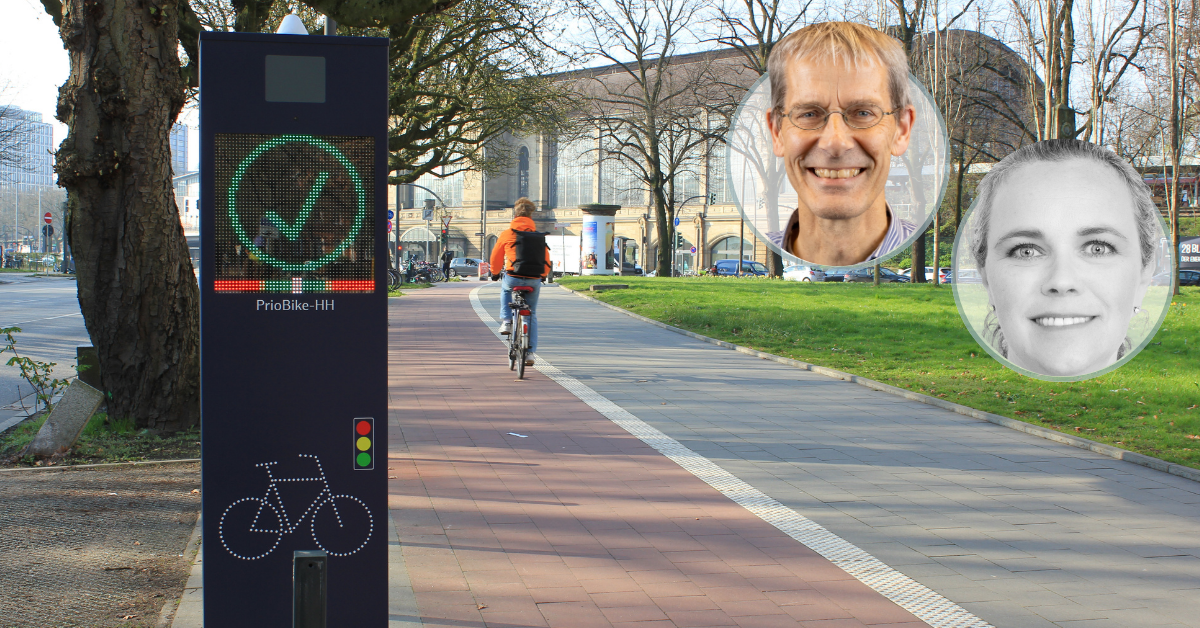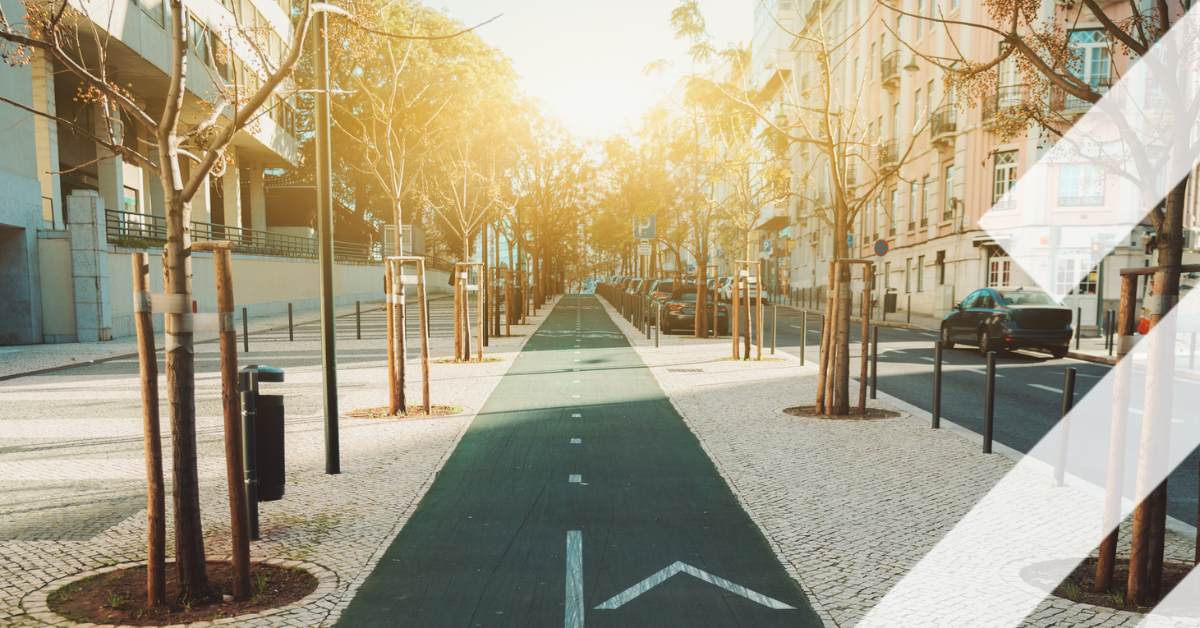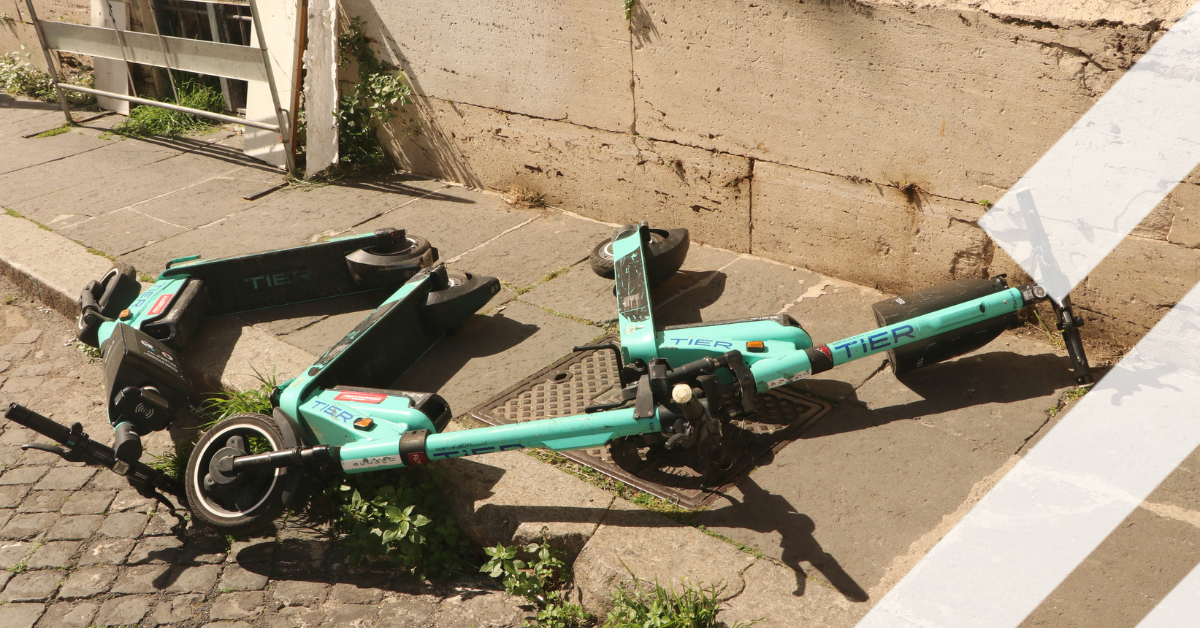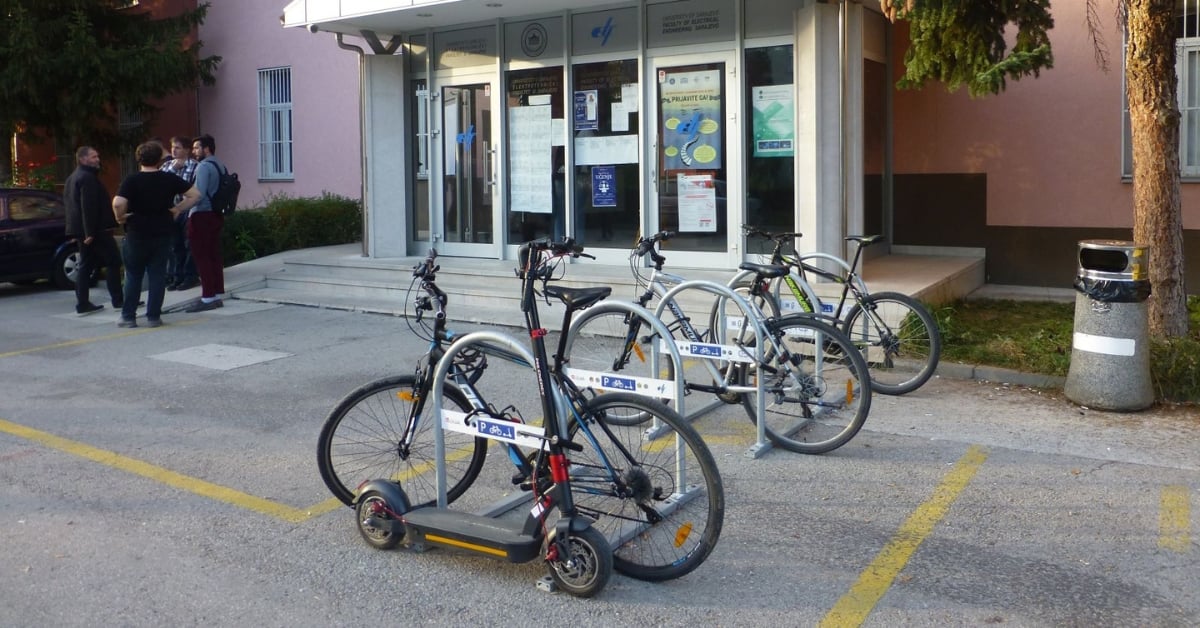Micromobility is a booming new transport industry sector but there has to be sufficient infrastructure to safely park and store the influx of e-scooters. Is the Mobility Arch, an innovative new initiative from Bosnia & Herzegovina, the ideal solution?
Electric scooters took the world of micromobility by storm during the last decade by introducing something approaching a revolution in the territory of the individual commute, creating a whole new breed of Private Transportation Vehicles (PTVs). Their rapid expansion in popularity caught most the countries unawares, as many were struggling with passing new traffic rules and legislation in order to organize ridership of these vehicles without hindering the benefits of their use.
Their appeal is quite easy to understand: e-scooters are small, lightweight, flexible, offer much-needed independence from fossil fuels. They represent a viable mode of sustainable transport, particularly for European Cities, as most are founded on their historic architecture, and hence have a permanent task to make the smartest and best use of the available space.
e-scooters are small, lightweight, flexible, offer much-needed independence from fossil fuels and represent a viable mode of sustainable transport, particularly for European Cities.
ON A SIMILAR PATH
Although e-scooters are able to share the same spaces as bicycles (principally bike paths and lanes), what about parking? Is it possible to share the parking infrastructure as well? The parking of electric scooters at first seems fairly simple, but it remains are largely undefined and underdiscussed topic and a challenge for cities worldwide to address. On one hand, the success of e‑scooter rental companies has resulted in European streets being flooded with branded e-scooters in a variety of colours, with many discarded and scattered on the sidewalks and pavements, posing a disruption and a threat to pedestrians. There have been numerous cases of subsequent injuries and law suits against the operators.
According to conventional wisdom (as much as conventional wisdom can apply to a 21stcentury invention), the best way for owners to keep their e-scooters safe is to carry them wherever they go. However, this practice is at best questionable and at worse impractical for several reasons. Not all public spaces are able (or even willing) to accommodate e-scooters: busy cafes, hospitals and some public buildings for example. Also, lugging your PTV around is really inconvenient when there are stairs to climb, especially when you consider that modern e-scooters with longer range and bigger battery can easily weigh in excess of 25kgs.
According to conventional wisdom the best way for owners to keep their e-scooters safe is to carry them wherever they go. However, this practice is at best questionable and at worse impractical
Finally, what if the riders just want to make a quick stop at the local café or grocery store and just leave their scooters parked unattended for a couple of hours at a square before strolling down the main crowded streets of the city? There are three main topics to be addressed here: safety against theft and vandalism for the parked scooters, organization and use of the provided parking space, and the technical solution of the parking itself.
A QUESTION OF GEOMETRY
Above all, proper parking racks have to be provided in the public area. Usually, if nothing more suitable is provided, existing and good quality inverted-U or staple bike racks are used for securing e‑scooters. Although, bicycles and e-scooters have different geometries, bike frames always feature a rear triangle that can be used for locking, and most of them also have a middle triangle. On the contrary, e‑scooters have small wheels and an L-shaped chassis that means that they can very easily slide off the bike rack and topple over if not tightly secured.
More importantly, the use of the U-locks to securing e-scooters may be ineffective as they do not provide a good level of safety, especially in the case of U-locks with longer shackles due to the loose locking and the possibility to pull out the steering stem and handlebar of the e-scooter between the parking rack stay and the U-lock. For this reason, more cities have taken to providing separate parking racks for bicycles and e-scooters.
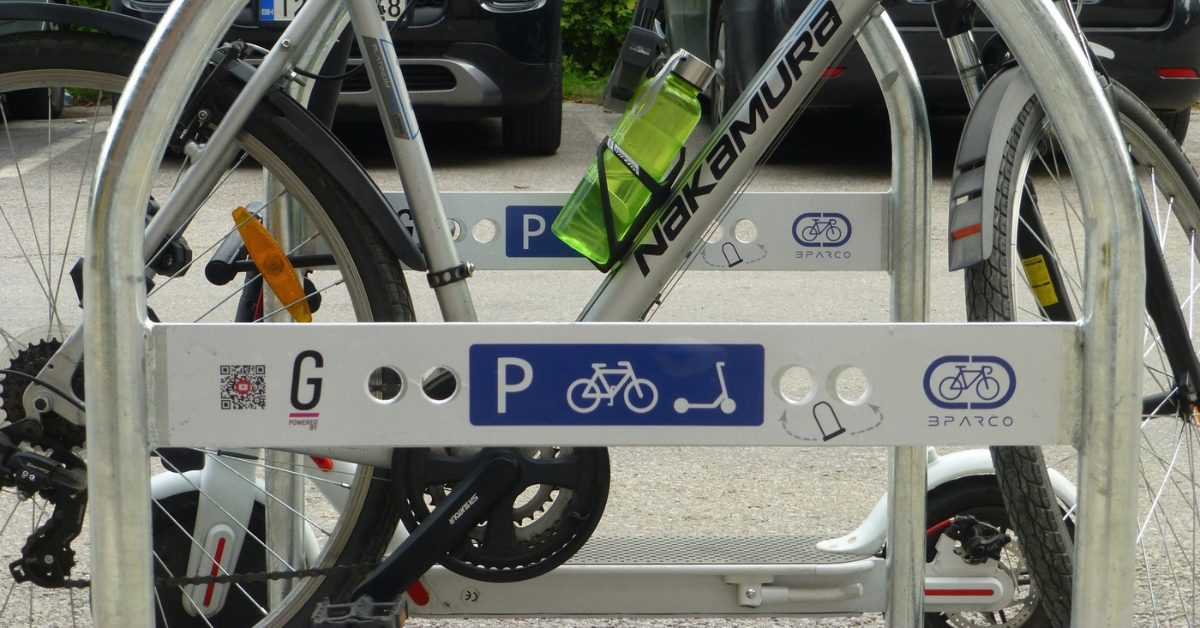
Many shopping malls and grocery stores, for example, have set up two separate parking lots in order to properly accommodate e-scooters and prevent them from being stolen or damaged. Separate parking racks enable e-scooters to be locked by the middle or the top of the steering stem, usually by use of an ordinary padlock or a U-lock, and just underneath the handlebars, meaning that the e-scooter is tightly secured in an upright position. However, additional parking racks cost extra money, need additional use of materials required for production that is already not particularly environmentally friendly and, most importantly, takes up additional space.
So this bring us to the question alluded to at the very beginning of this article: if they are so alike in their purpose, can both bicycles and e-scooters use the same parking infrastructure with full compatibility, the same standard proven locks and take up the same space while being parked securely in a public area? Or in other words, is there really such a thing as a good micromobility parking solution?
If they are so alike in their purpose, can both bicycles and e-scooters use the same parking infrastructure with full compatibility, the same standard proven locks and take up the same space while being parked securely?
AN ARCH SOLUTION
According to Damir Margeta, a traffic engineer from Sarajevo, Bosnia, the answer is yes. During the European Mobility Week 2022 he introduced an innovative design that can help to solve all of the above-named challenges.
Called the BPARCO Mobility Arch, this patent-pending concept relies on a small, yet effective innovation. With a specific modification of the mid-bar, a standard inverted-U or staple bike rack (called Mobility Square) is turned into a multipurpose micromobility parking rack that is able to accommodate e-scooters as well. The mid-bar on the Mobility Arch has several holes on the side that are spaced out with geometrical precision to accommodate U-locks of standard sizes so that the U-lock shackle encompasses the stay of the bike rack and the steering stem of the e‑scooter.
When locked, the U-lock secures the e-scooter in an upright position from which it cannot be toppled, tilted, or pulled out, hence drastically minimizing the chances of theft and vandalism.
Says Margeta: “Besides proper security, this type of locking enables e-scooters to be parked neatly and in an orderly fashion, while using available space efficiently and with a optimal area footprint. One rack can accommodate two vehicles, either bicycles, e-scooters or a combination of the two.”
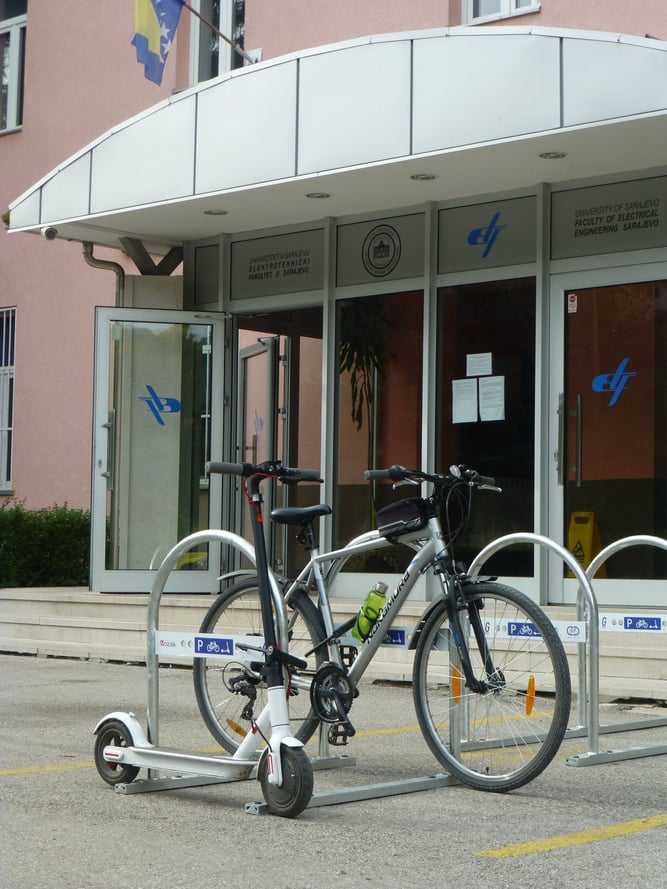
GOVERNMENTAL SUPPORT
Margeta’s BPARCO innovation received a local innovation grant from (BH Trezor inovacija), prototypes were showcased at the Velo-city eventin Ljubljana, Slovenia, last year, and has recently won a local startup pitch competition (Tech Boost 4).
“Besides Sarajevo, these parking racks have been implemented in Goradže, in the east of Bosnia, at a couple of locations by the initiative of the local environment protection organization Eco Habitat and bike activists from Giro di Sarajevo,” adds Margeta. “More importantly, it also got the attention of local government officials that plan to induce higher rates of micromobility by setting up these proper parking lots at several locations.”
First Bosnia & Herzegovina – tomorrow the world?
